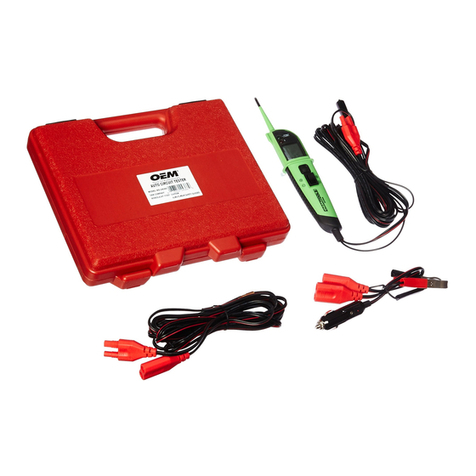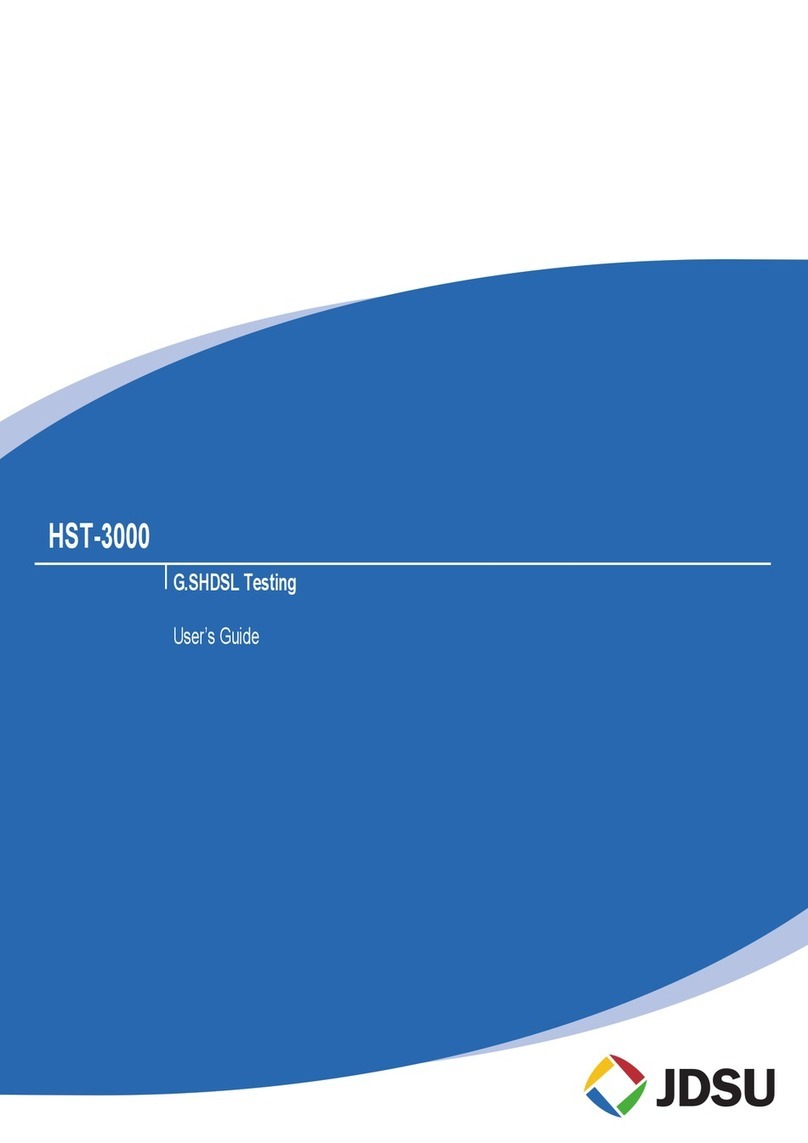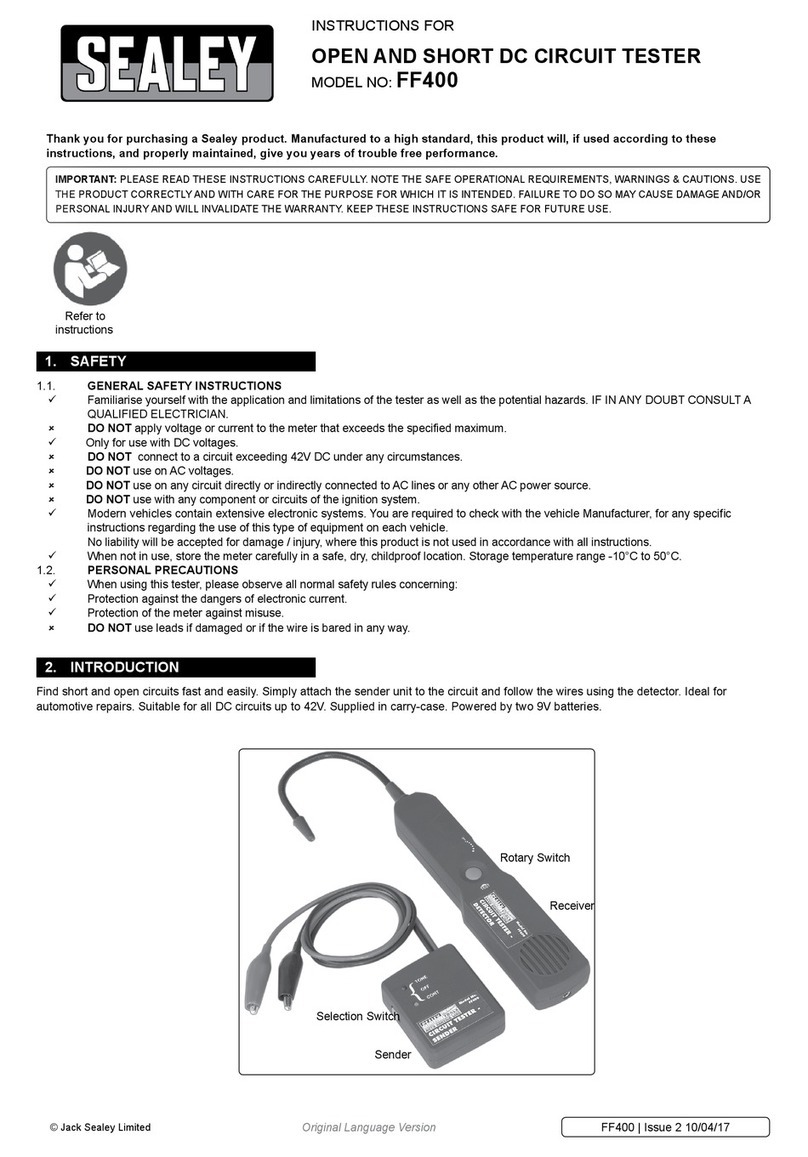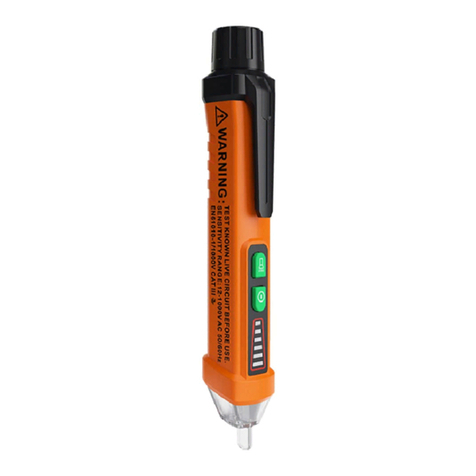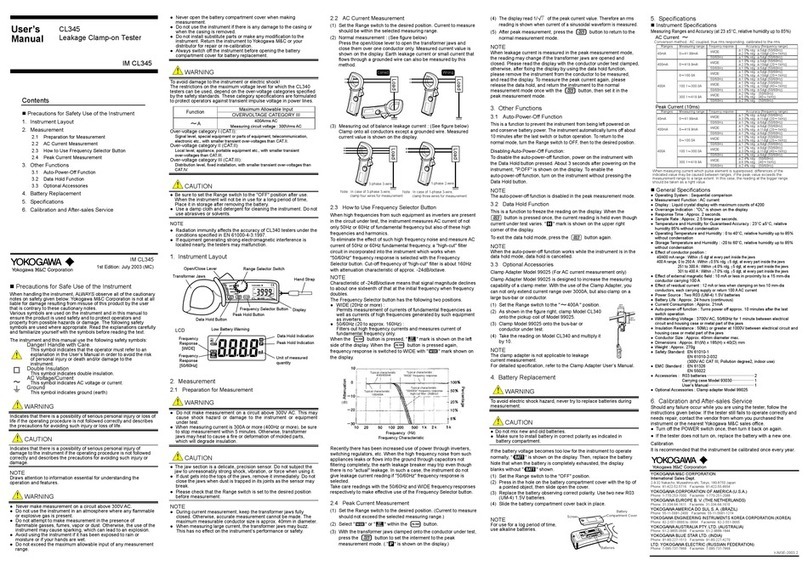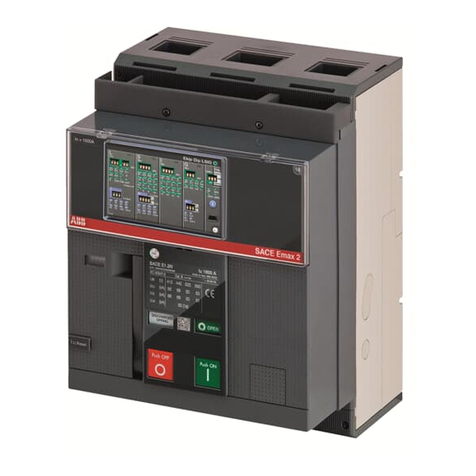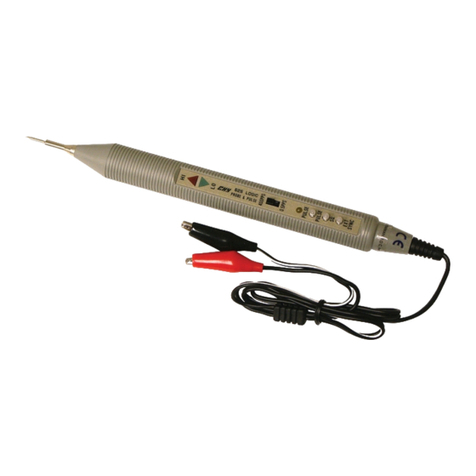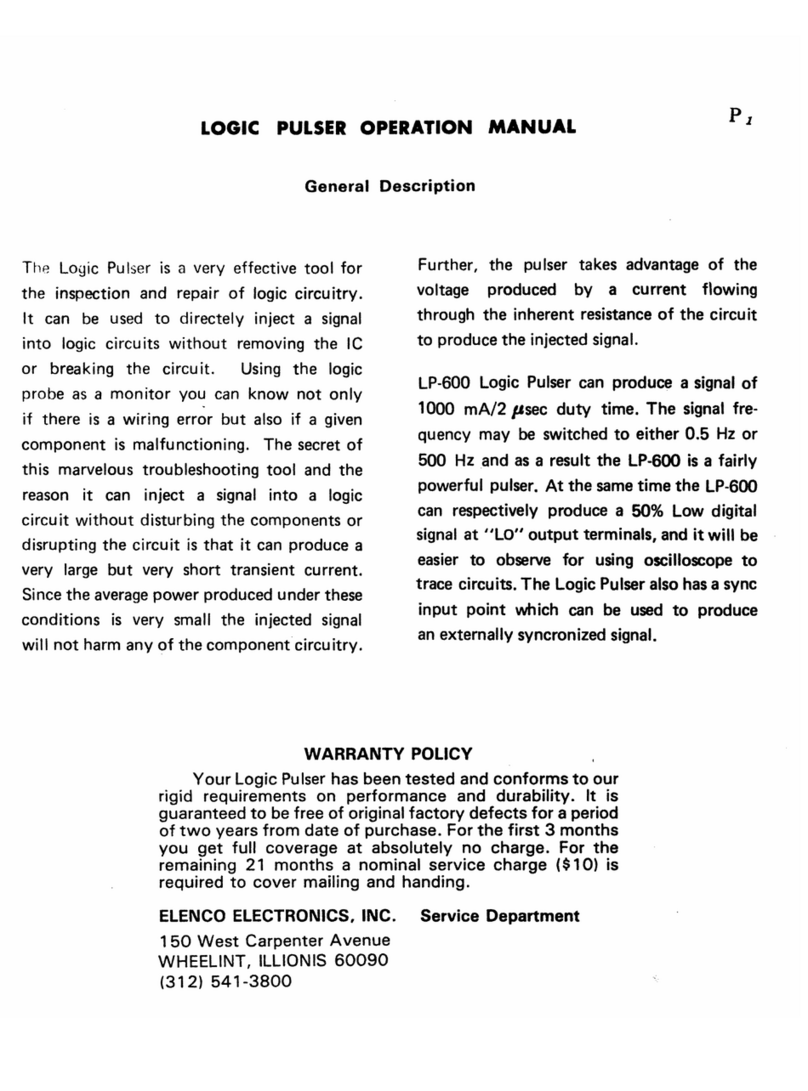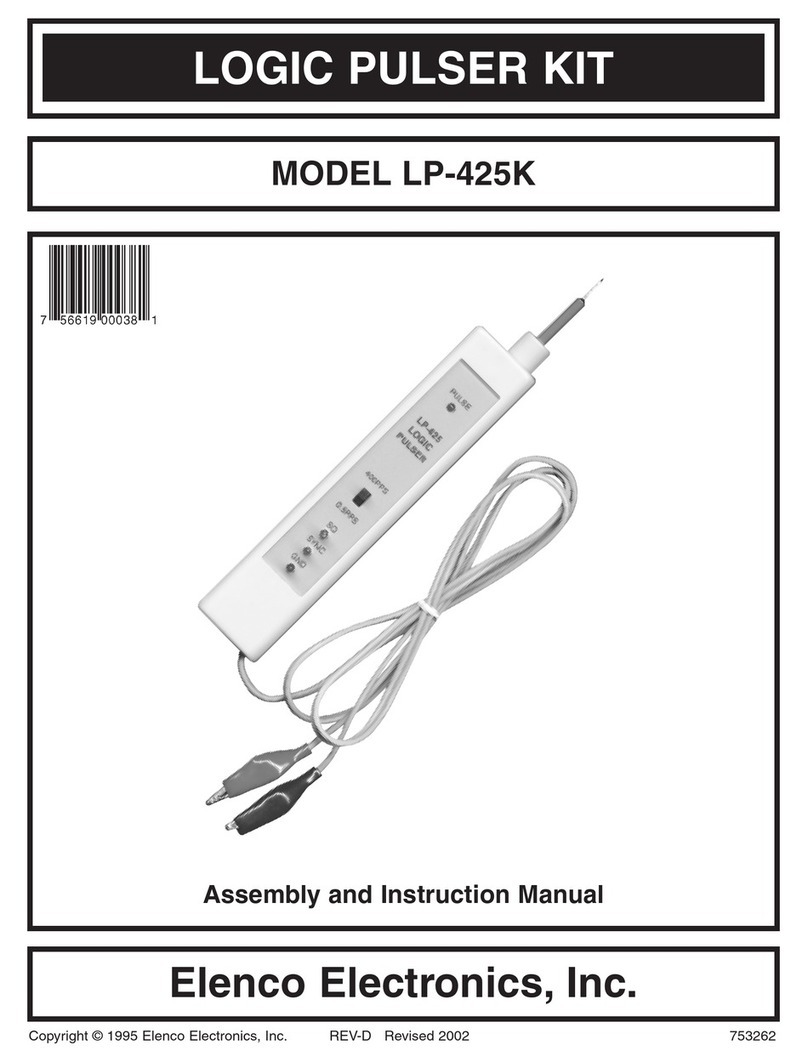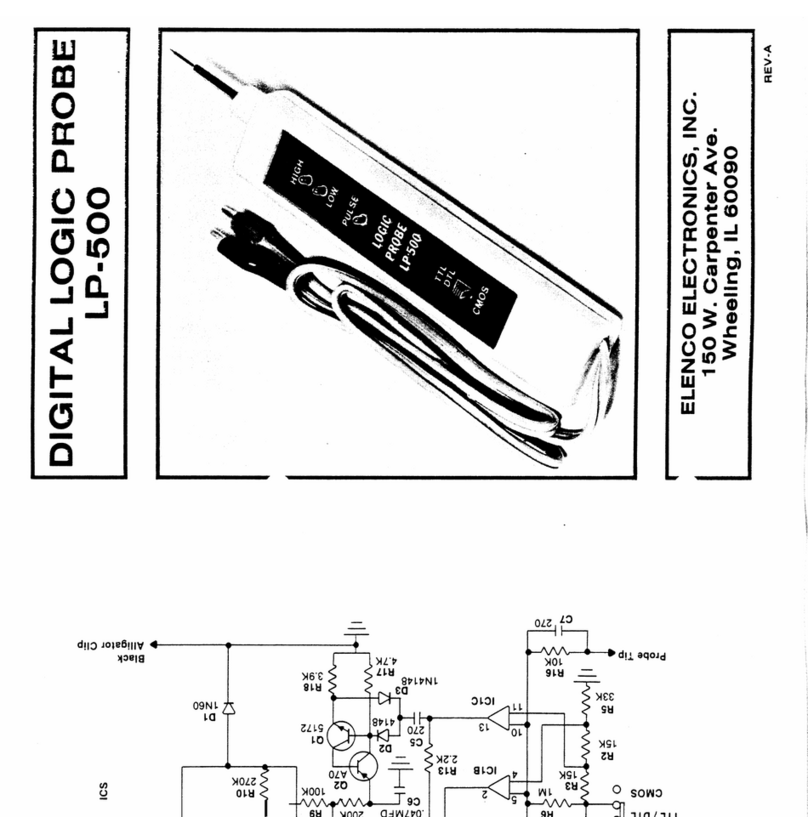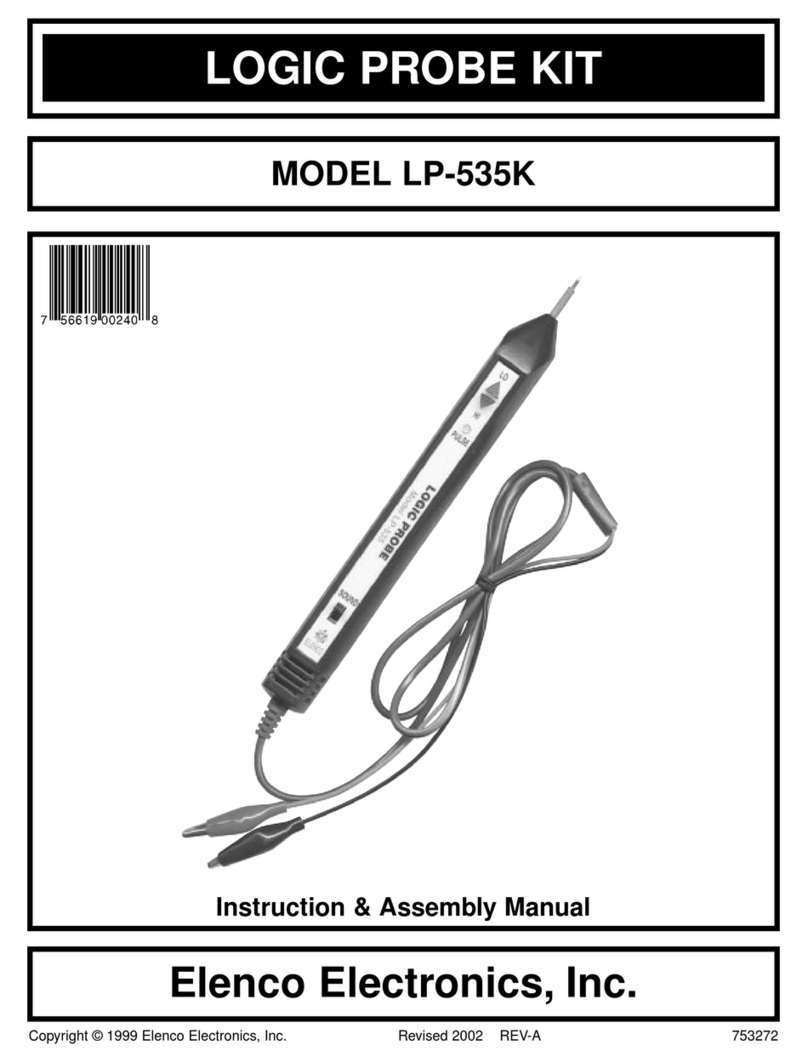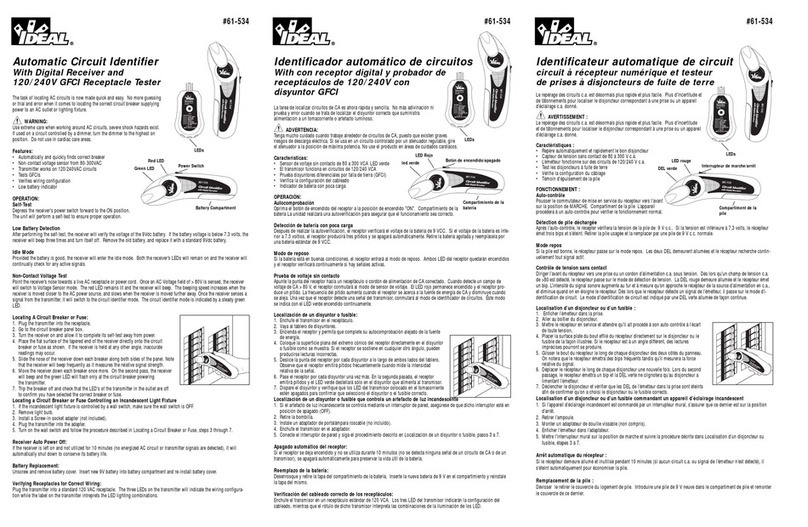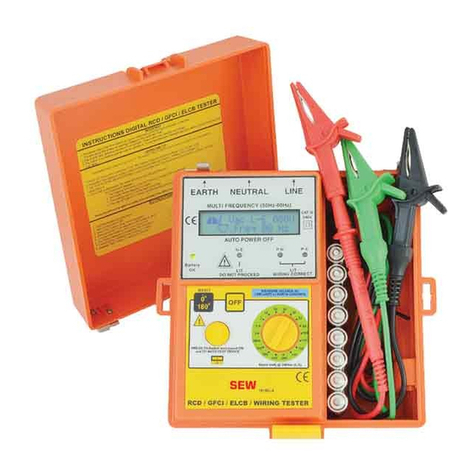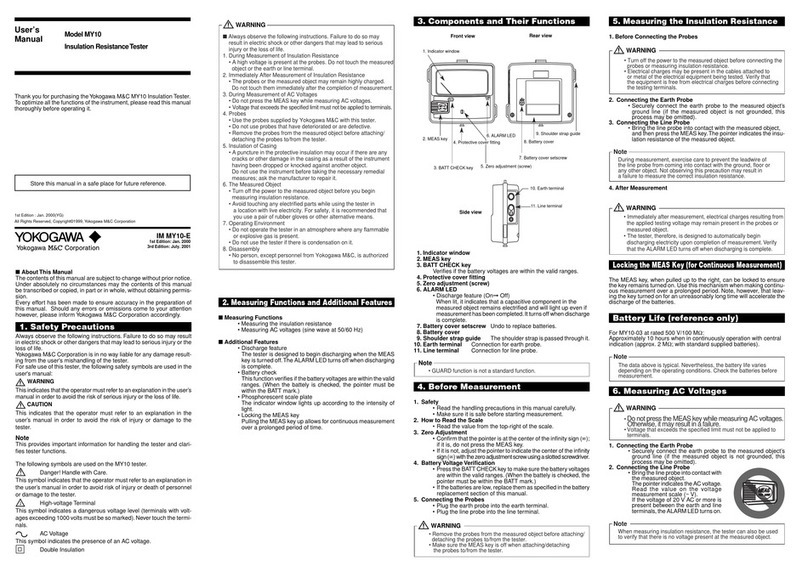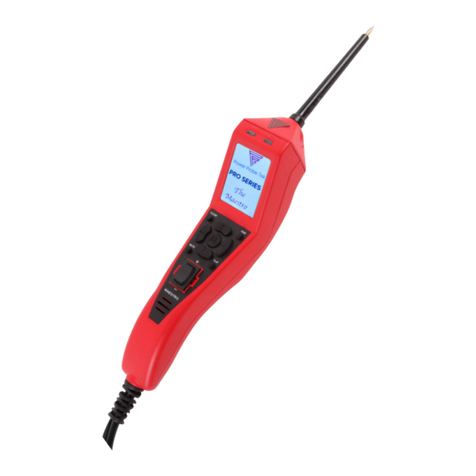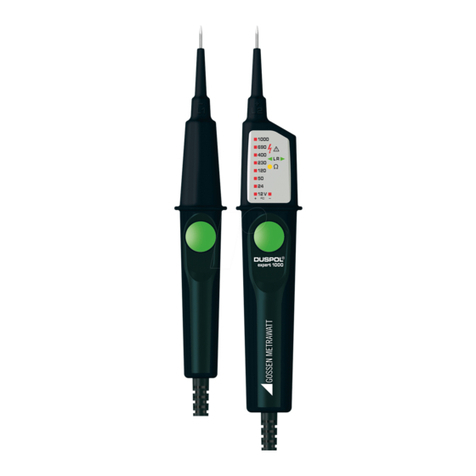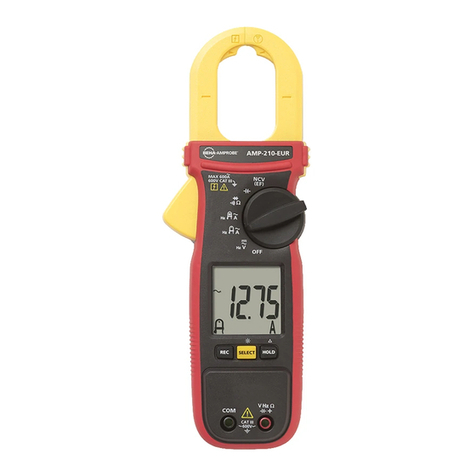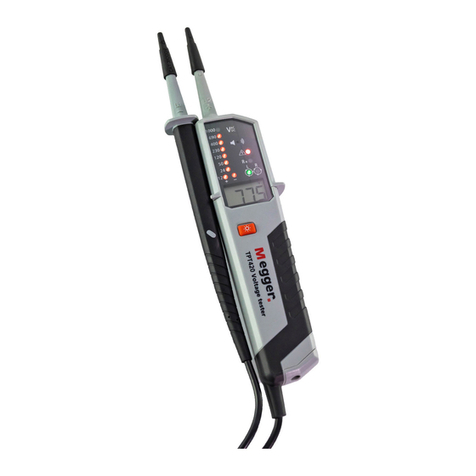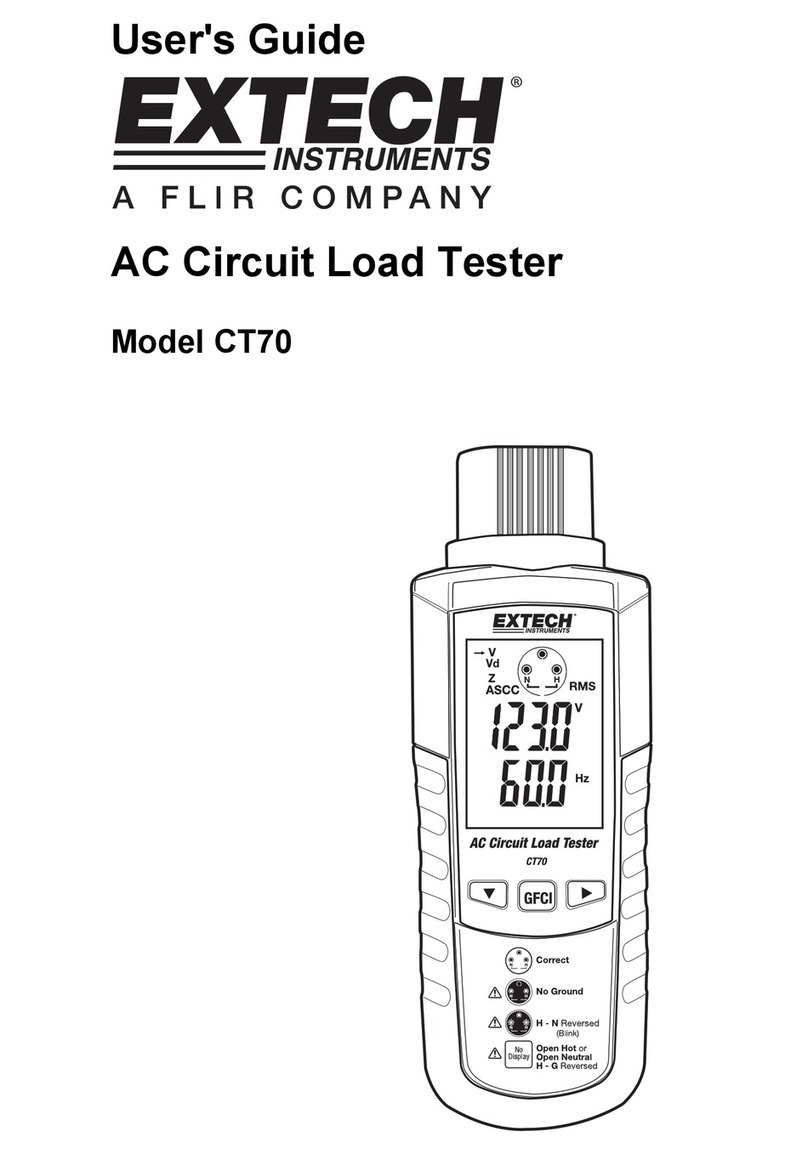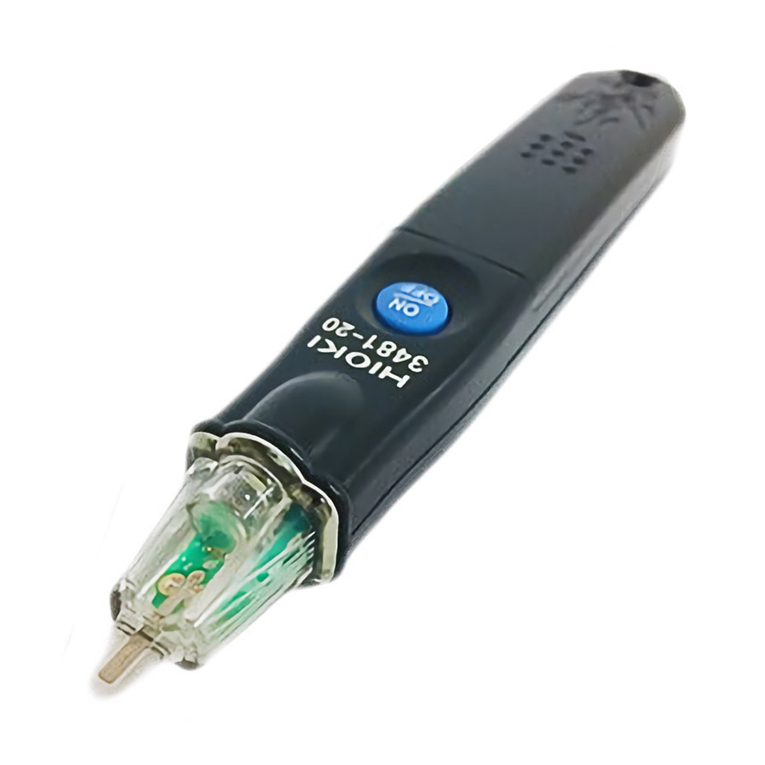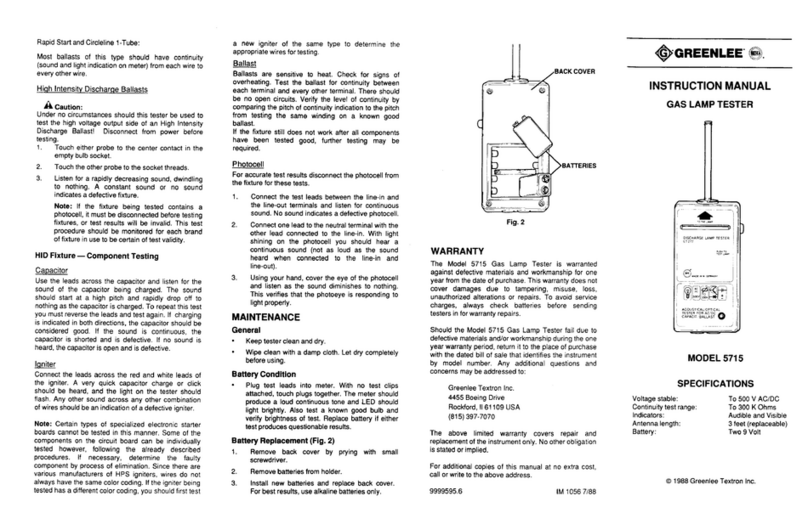
-3-
SPECIFICATIONS
Input Impedance 1MW
Input Overload Protection 50V DC continuous
Thresholds Logic 1 Logic 0
TTL 2.3 + .25V 0.80V + .1V
CMOS 70% Vcc 30% Vcc
Response better than 25 nanoseconds
Pulse Detector 1.5 millisecond pulse stretcher
Power Requirements 5V Vcc @ 30mA
15V Vcc @ 40mA
Operating Temperature –40OC to +85OC
CIRCUIT DESCRIPTION
The Elenco™ Model LP-525K Logic Probe kit is a
convenient and precise instrument for use in the
measurement of logic circuits. It displays logic
levels (high or low), and voltage transients down to
25 nanoseconds. The LED readouts provide instant
response to the logic state.
To detect the high and low logic levels, the LP-525
uses two comparators of a Quad Comparator
LM2901 Integrated Circuit (see schematic diagram).
One comparator drives the HI LED and the other
drives the LOW LED. The comparator output goes
low, lighting the LED, when the (–) input is more
positive than the (+) input. To measure TTL circuits,
the TTL-CMOS switch is set to TTL and the red and
black alligator clips are connected to +5VDC and
ground. The (+) input (pin 5) of the HI comparator is
then biased to 2.3VDC by resistor network R9
through R15. Thus, the LED lights when the probe
tip is more positive than 2.3VDC. To measure
CMOS circuits, the HI comparator changes to
3.5VDC or 70% of the supply voltage.
The (–) input of the LOW comparator is biased to
.8VDC for TTL operation and 1.5VDC or 30% of the
supply voltage for CMOS operation. The LOW LED
thus lights when the probe tip is connected to
voltages less than .8 or 1.5VDC.
The pulse LED is controlled by a bipolar edge
detector circuit which responds to both positive and
negative transients. This circuit is made up of
capacitors C2 and C3, transistors Q1 through Q4,
and the associated resistors. When the circuit is
activated by pulses as short as 25 nanoseconds, a
negative pulse is applied to the (+) input (pin 11) of
the pulse stretcher comparator. The comparator
then turns on and is held by the feedback resistor
R8. The ground level on the output (pin 13) causes
C5 to discharge through R17. In approximately 1.5
milliseconds, the voltage on the (–) input (pin 10)
becomes more negative than the (+) input and the
comparator turns off. The short pulse on the input is
thus stretched to 1.5 milliseconds.
The (–) input (pin 8) of the PULSE LED driver is
biased to +2.5VDC by resistors R19 and R20. The
(+) input is biased to +3VDC by resistors R6 and
R18. The 1.5 milliseconds pulse from the pulse
stretcher grounds the (+) input through diode D5
turning the comparator on and lighting the PULSE
LED. When the PULSE-MEM switch is in MEM, Q5
is also turned on, causing the (–) input of the
comparator to go to +5VDC. This keeps the
comparator on even after the (+) input returns to
+3VDC. When the PULSE-MEM switch is in
PULSE, the feedback path to the (–) input is broken
and the LED is lit only for the duration of the 1.5
milliseconds pulse.
Thus, each time the input signal changes state, the
PULSE LED is activated for 1.5 milliseconds. When
observing low frequency signals, the PULSE LED
provides an immediate indication of this pulse
activity. By observing the HI and LOW LEDs, the
polarity of the pulse train can be determined. Low
frequencies cause the PULSE LED to blink once for
each transition. High frequencies cause the LED to
flash at a rate that makes it appear to be on
continuously. When the PULSE-MEM switch is in
MEM, a single input pulse will cause the PULSE
LED to come on and stay on until the switch is
returned to the PULSE position.
The input impedance of the LP-525 is 1MW. This
eliminates any loading effect on the circuit under
test.
CAUTION: Do not connect the alligator clips to any
AC power source or to a DC power source greater
than 35VDC. Failure to comply with this warning
may result in damage to this instrument.
